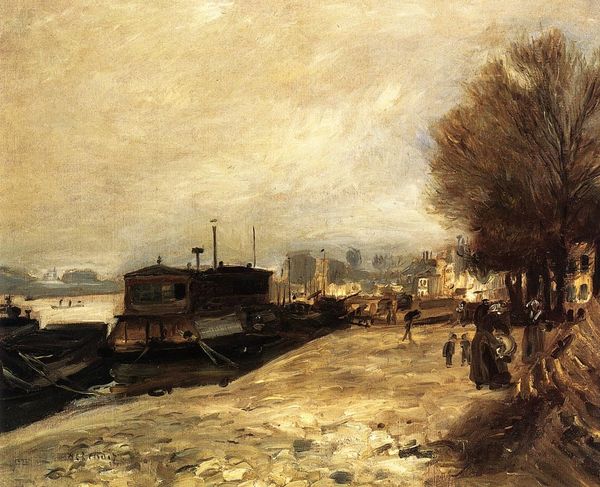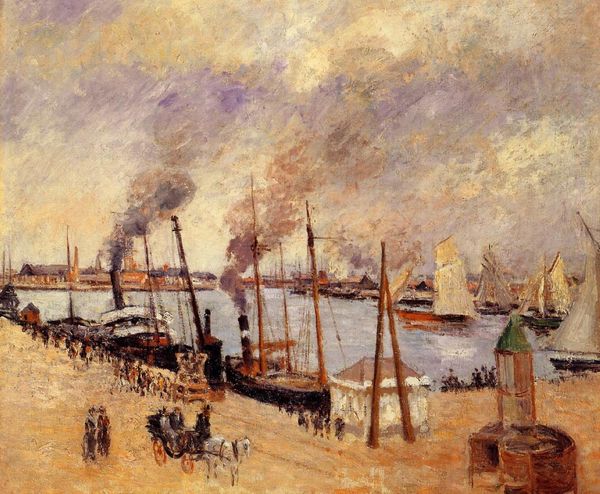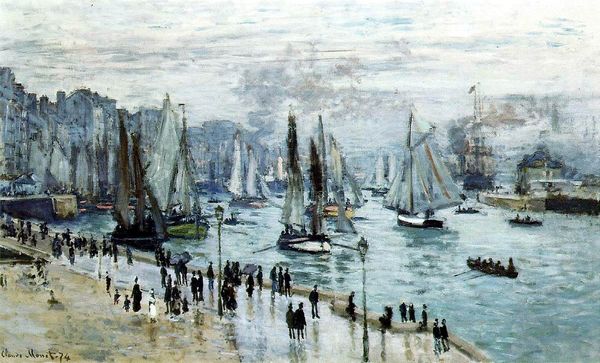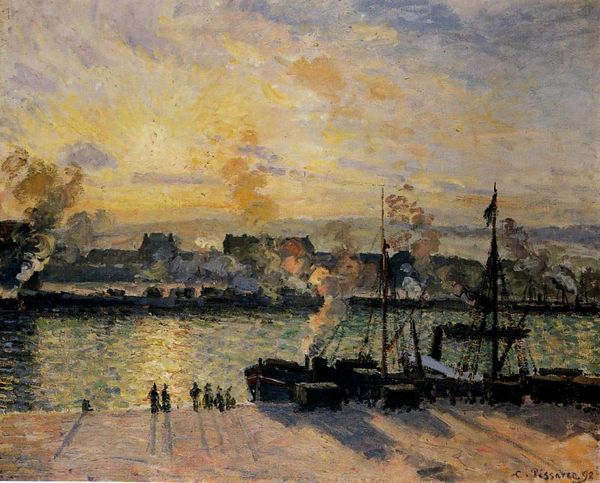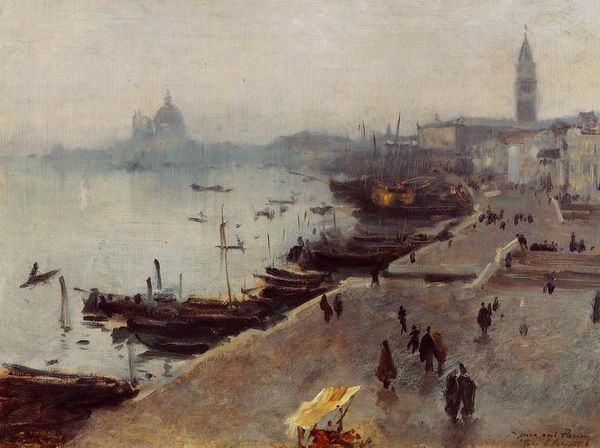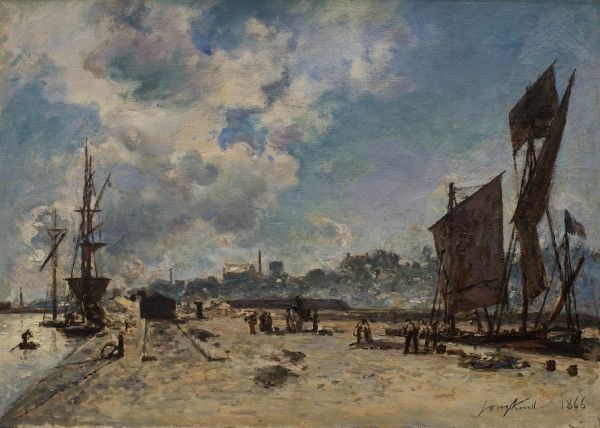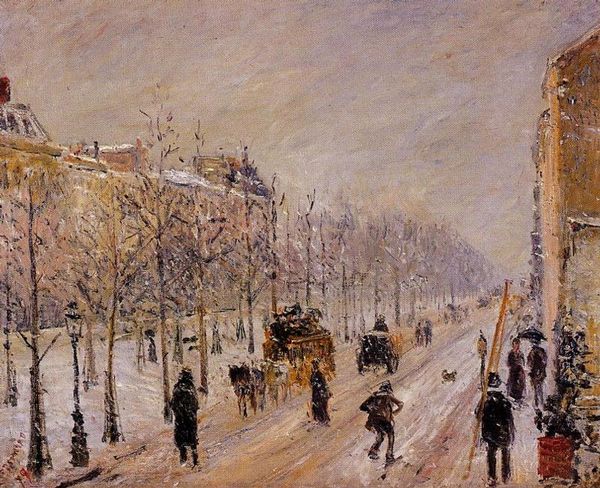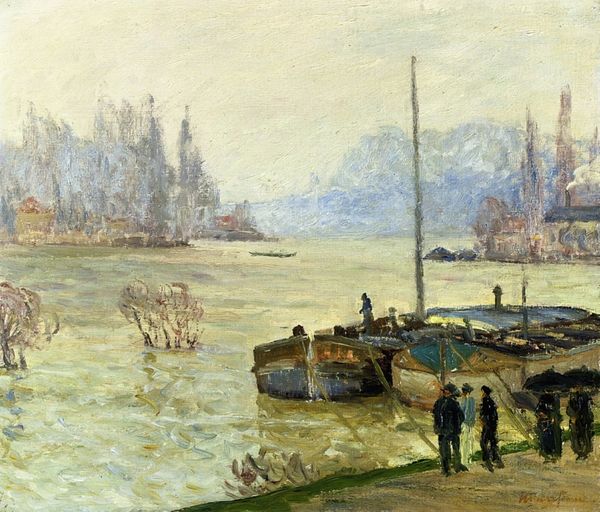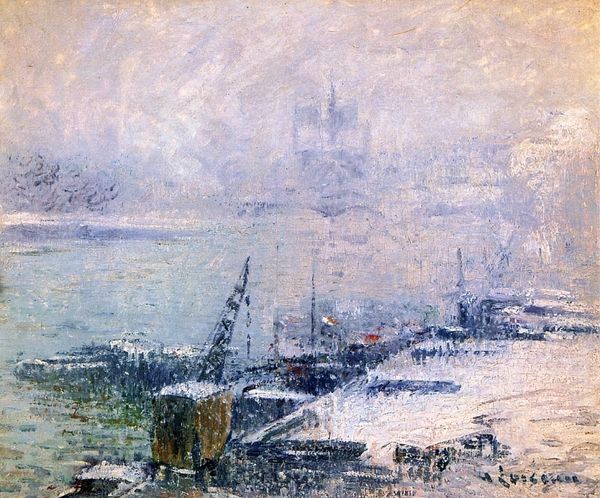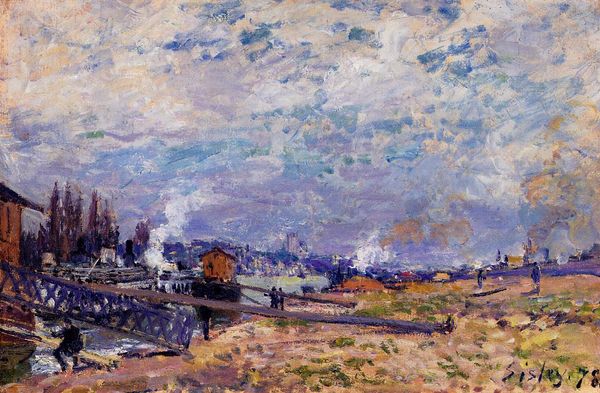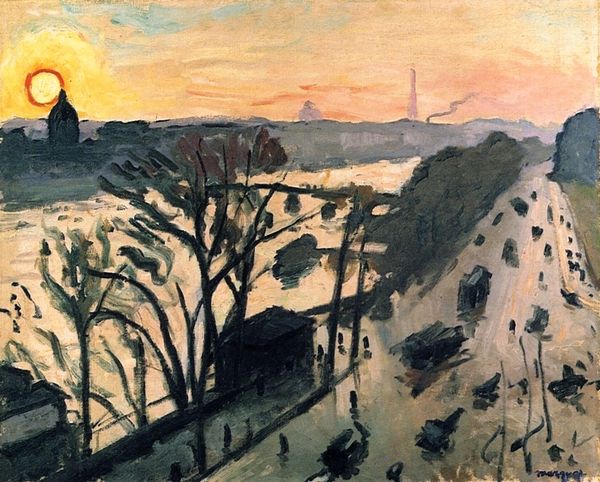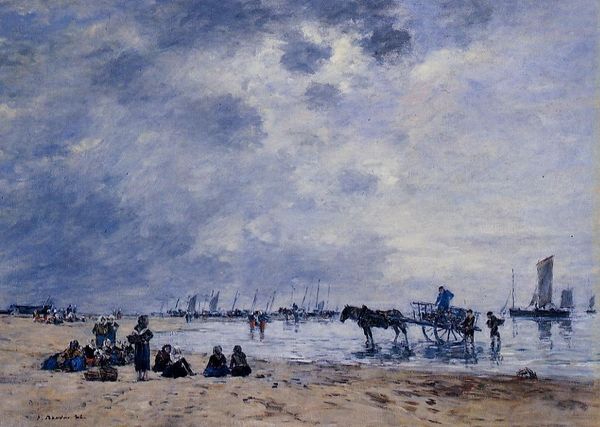
painting, plein-air, oil-paint
#
painting
#
impressionism
#
plein-air
#
oil-paint
#
landscape
#
impressionist landscape
#
oil painting
#
cityscape
Copyright: Public domain
Editor: This is Claude Monet’s “Amsterdam in the Snow,” painted in 1874 using oil paints in the plein-air style. I’m struck by how subdued the color palette is, almost monochromatic. It evokes a sense of quiet solitude. What symbolic readings do you find here? Curator: The pervasive greys and whites are immediately arresting. Consider the symbolism of winter itself – dormancy, reflection, but also endurance. Snow, traditionally a symbol of purity and stillness, here seems to cloak the city, perhaps suggesting a pause in the bustling commercial life of Amsterdam. Editor: That makes sense. The figures are also so small. Curator: Indeed. Notice how the small, indistinct figures are rendered, almost as ghosts navigating this snowy landscape. Do you see any connections to the religious concept of cleansing, or atonement perhaps? The figures against the cathedral could suggest spiritual renewal in contrast with modern life. Editor: It is a striking composition. How interesting that Monet would choose the city of Amsterdam rather than a French setting during this period in his career. Curator: Precisely. It invites speculation. Amsterdam, at this time, possessed its own rich visual vocabulary with the imposing architecture. Perhaps, for Monet, it became a new canvas of historical weight and symbolic import, reflecting human experience onto landscape. Editor: Thank you. I hadn’t thought of it that way, linking the season, landscape, city, and small people within that time in history. Curator: And what's remarkable is that an “impression” remains in the present, laden with possibilities of symbolic discovery that reveal our past and current values and concerns.
Comments
No comments
Be the first to comment and join the conversation on the ultimate creative platform.
